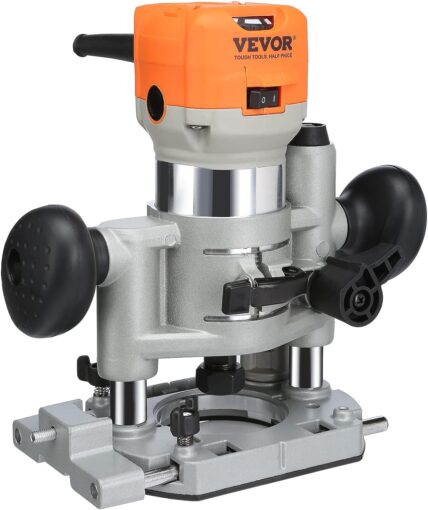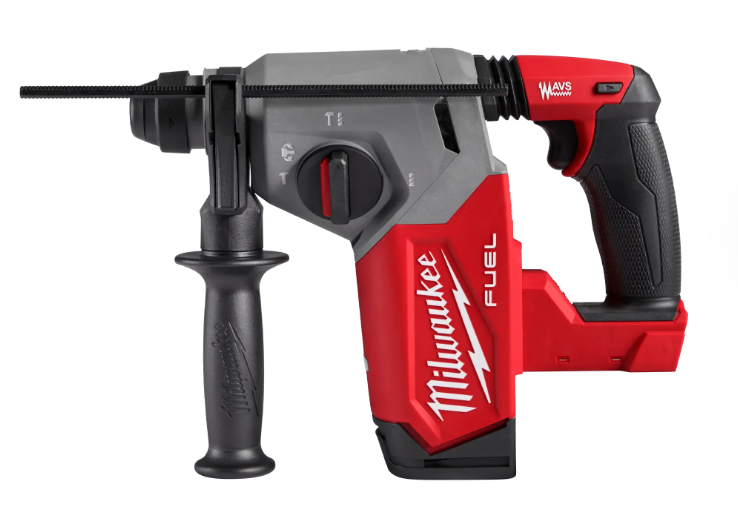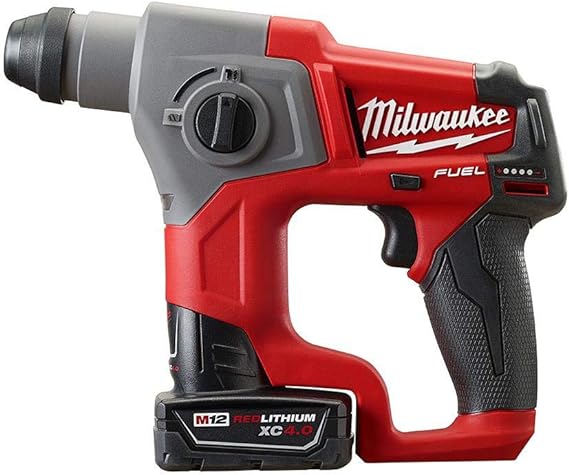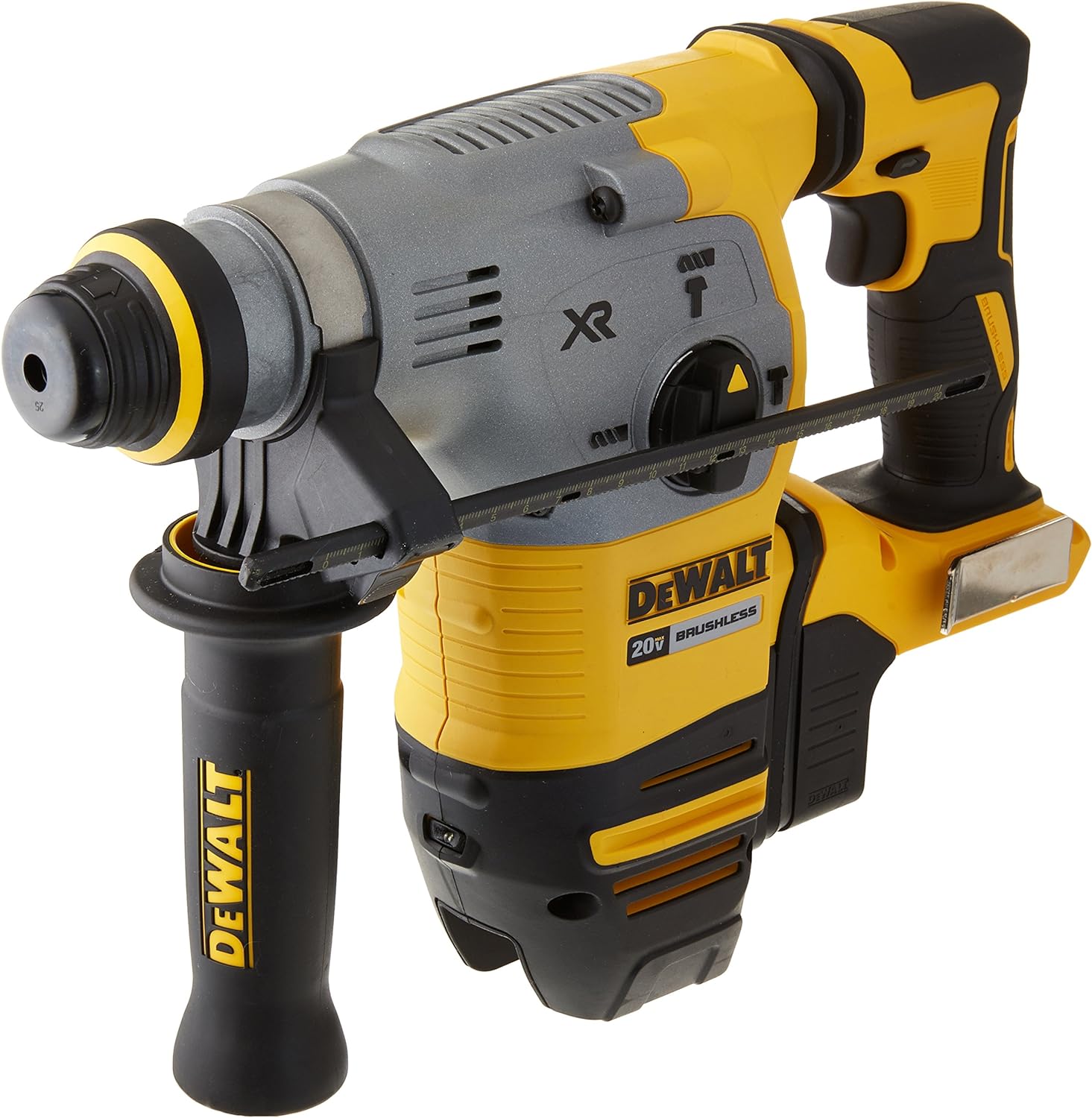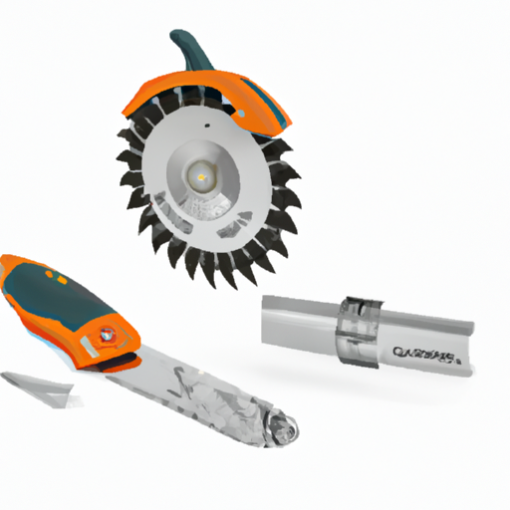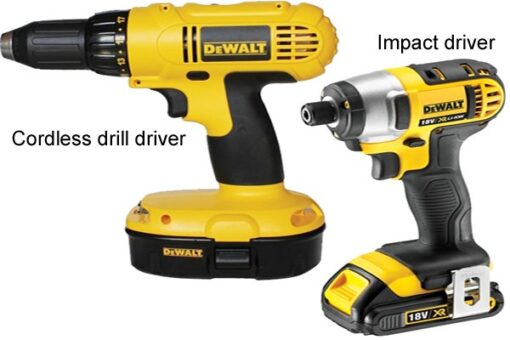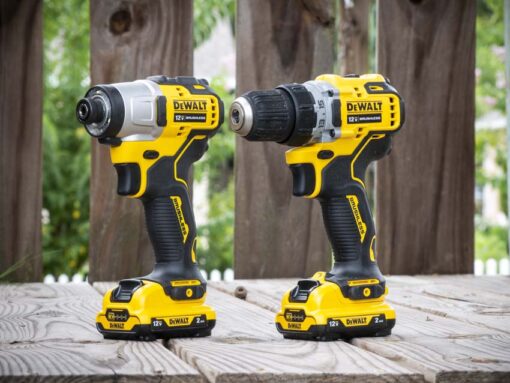In the world of woodworking, there’s always a debate about which tools reign supreme. One ongoing discussion revolves around plunge woodworking routers and fixed-base handheld ones. Both types of routers have their merits and drawbacks, but the question remains: Are plunge woodworking routers truly better than fixed-base handheld ones? Let’s delve into this topic and explore the advantages and disadvantages of each, so you can make an informed decision for your woodworking projects.
Features of Plunge Woodworking Routers
Depth Adjustment
One of the key features of plunge woodworking routers is their depth adjustment mechanism. With a plunge router, you have the ability to set and adjust the depth of your cuts while the router is in operation. This allows for more precision and control when working on projects that require varying depths of cuts.
Precision Routing
Plunge woodworking routers are known for their precision routing capabilities. The plunge base allows for accurate and controlled movements, making it easier to achieve clean and precise cuts. Whether you’re creating intricate details or working on fine woodworking projects, a plunge router can help you achieve the level of precision you desire.
Versatile Cutting Depths
Plunge routers offer the advantage of versatile cutting depths. The ability to plunge the router bit into the material at different depths allows for greater flexibility in your woodworking projects. Whether you need shallow cuts or deeper grooves, a plunge router can handle a wide range of cutting depths, giving you the freedom to explore different techniques and designs.
Ease of Use
Plunge woodworking routers are designed with user-friendliness in mind. They typically have ergonomic handles and intuitive controls, making them easy to handle and operate. The plunge mechanism allows for smooth and controlled movements, ensuring that even beginners can use them with ease. Additionally, many models feature adjustable speed settings, further enhancing the ease of use and allowing you to adapt to different materials and cutting requirements.
Template Routing
Another notable feature of plunge woodworking routers is their compatibility with template routing. By using guide bushings or templates, you can achieve precise and consistent cuts, even when working on complex shapes or patterns. This feature is especially useful for creating duplicate pieces or replicating intricate designs, saving time and ensuring accuracy in your woodworking projects.
Router Bit Changing
Plunge routers often come with convenient and quick router bit changing mechanisms. This saves you time and effort when you need to switch between different router bits for various cuts and applications. Many plunge routers feature a spindle lock that allows you to secure the router bit in place, making it easy to change bits without the need for additional tools.
Dust Collection
Dust collection is an important aspect of any woodworking tool, and plunge routers are no exception. Many plunge routers come equipped with built-in dust collection systems or have the option to attach a dust extraction hose. This helps keep your work area clean and improves visibility while also reducing the amount of dust particles you inhale during operation.
Motor Power
Plunge woodworking routers are usually available in a range of motor power options. This allows you to choose a router that best suits the demands of your woodworking projects. Whether you’re working with softwoods, hardwoods, or even metals, having a powerful motor ensures that your router can handle the workload without bogging down or overheating.
Spindle Lock
The presence of a spindle lock in plunge routers is a valuable feature. When using a plunge router in fixed-base mode, the spindle lock allows you to keep the router bit in position while making adjustments or changing the depth settings. This helps maintain accuracy and stability, especially when working on intricate projects that require consistent routing depths.
Price and Availability
Plunge woodworking routers are available in a wide range of prices to cater to different budgets and needs. Whether you’re a beginner or a professional woodworker, you can find a plunge router that suits your requirements. They are also readily available in many woodworking and hardware stores, as well as online marketplaces, making them easily accessible to anyone looking to invest in a versatile and powerful router.
Features of Fixed-Base Handheld Routers
Stability
Fixed-base handheld routers are valued for their stability during operation. They feature a solid base that offers increased stability and support, allowing for precise and controlled cuts. This stability is particularly beneficial when working on large or heavy workpieces, as it minimizes the risk of the router slipping or tipping over, ensuring safety and accuracy.
Ease of Handling
Fixed-base handheld routers are designed with ease of handling in mind. They are typically lightweight and have ergonomic handles, making them comfortable to grip and maneuver. This allows you to have better control over the router during operation, reducing the risk of mistakes or accidents. The compact design of fixed-base routers also makes them easier to transport and store when not in use.
Compact Design
Fixed-base handheld routers are known for their compact design, which makes them highly portable and suited for working in confined spaces. Whether you’re working in a small workshop or need to take your router to different job sites, the compact size of fixed-base routers ensures easy transportation and maneuverability.
Router Bit Changing
Similar to plunge routers, fixed-base handheld routers also offer convenient router bit changing mechanisms. Many models feature a spindle lock that allows for hassle-free bit changes without the need for additional tools. This saves time and effort, enabling you to switch between different router bits quickly and efficiently.
Dust Collection
Dust collection is an important consideration for fixed-base handheld routers as well. While they may not have built-in dust collection systems like some plunge routers, many models offer the option to attach a dust extraction hose or an external dust collection system. This helps minimize the amount of dust generated during operation and contributes to a cleaner and healthier work environment.
Motor Power
Fixed-base handheld routers are available in various motor power options to accommodate different woodworking needs. Whether you’re working on intricate details or tackling more substantial projects, having the appropriate motor power ensures that your router can handle the workload efficiently and effectively.
Spindle Lock
While plunge routers feature a spindle lock for maintaining stability during depth adjustments, fixed-base handheld routers also offer the same functionality when using them in fixed-base mode. This feature allows you to secure the router bit in place, ensuring accuracy and stability during routing tasks that require consistent depths.
Price and Availability
Fixed-base handheld routers come in a wide range of price points, allowing you to find one that suits your budget. They are widely available in woodworking and hardware stores, as well as online marketplaces, granting easy access to a variety of models to fit your needs. Whether you’re a professional woodworker or a hobbyist, fixed-base handheld routers are readily obtainable.
Specialized Applications
Fixed-base handheld routers excel in certain specialized applications. Their stability and control make them particularly suitable for tasks such as edge routing, shaping edges, trimming laminates and veneers, and creating precise dadoes and rabbets. If your woodworking projects frequently involve these applications, a fixed-base handheld router may be the ideal choice for you.
Versatility
While fixed-base handheld routers may specialize in certain applications, they are also highly versatile tools. With the right accessories and router bits, you can expand their capabilities and tackle a wide range of woodworking projects. From creating decorative profiles to joinery work, a fixed-base handheld router can handle numerous tasks, making it a valuable addition to any woodworker’s arsenal.
Comparison of Plunge and Fixed-Base Handheld Routers
Routing Depth Adjustment
One of the key differences between plunge and fixed-base handheld routers is the method of depth adjustment. Plunge routers allow for on-the-fly depth adjustments, allowing you to change the cutting depth while the router is in operation. This feature is particularly useful when working on projects that require varying depths or when using the router for template routing.
On the other hand, fixed-base handheld routers require you to set the desired depth before starting the routing task. While this may offer less flexibility during operation, it can be advantageous for projects that require consistent or precise depths, as you can set it once and maintain it throughout the task.
Routing Precision
Both plunge and fixed-base handheld routers can offer excellent routing precision, but the method of operation differs. Plunge routers are often favored for their ability to provide controlled and accurate plunge cuts. The ability to lower the bit into the material gradually allows for more precise and controlled routing, ensuring clean and accurate cuts.
Fixed-base handheld routers excel in tasks that require stability and control. With their solid base and ergonomic design, they can deliver precise cuts, particularly when working with edges or performing specific applications such as edge routing or trimming. The stability of the fixed base minimizes the risk of the router moving, resulting in accurate and consistent cuts.
Routing Versatility
When it comes to routing versatility, both plunge and fixed-base handheld routers offer their advantages. Plunge routers shine in tasks that require varying depths, such as creating grooves, mortises, or freehand designs. The ability to adjust the depth while the router is in operation and the compatibility with guide bushings or templates make plunge routers highly versatile for different woodworking projects.
Fixed-base handheld routers, while slightly more limited in depth adjustments, excel in tasks that require stability and control. Their compact design and ease of handling make them ideal for tasks like edge routing, creating dados, or trimming laminates. With the right router bits and accessories, fixed-base handheld routers can handle a wide range of applications and provide versatility in many woodworking projects.
Ease of Use
Both plunge and fixed-base handheld routers offer ease of use, but the experience may vary depending on the specific tasks and personal preferences. Plunge routers are generally considered user-friendly due to their intuitive controls, ergonomic handles, and smooth plunging mechanism. The ability to adjust the depth while the router is in operation adds to the convenience, allowing for quick adjustments and adaptability to different routing situations.
Fixed-base handheld routers also prioritize ease of use with their lightweight and compact design. The ergonomic handles and stability of the fixed base contribute to the overall ease of handling, making them comfortable to use for extended periods. However, the need to set the depth before routing may require a bit more planning and adjustment time compared to plunge routers.
Template Routing
Template routing is an essential technique in many woodworking projects. Plunge routers are particularly well-suited for template routing due to their ability to accommodate guide bushings or templates. This enables you to replicate intricate designs or create duplicate pieces with ease and precision. The ability to plunge the bit at different depths while following the template provides accuracy and consistency, making plunge routers an excellent choice for template routing.
While fixed-base handheld routers may not have the same built-in compatibility with guide bushings or templates, they can still be used for template routing with the use of jigs or guide systems. While it may require additional setup and adjustment, fixed-base handheld routers can still achieve accurate and consistent results when used for template routing.
Changing Router Bits
Both plunge and fixed-base handheld routers offer convenient router bit changing mechanisms. Plunge routers often feature a spindle lock that allows for quick and easy bit changes without the need for additional tools. This feature enhances efficiency and saves time, enabling you to switch between different router bits seamlessly.
Fixed-base handheld routers also provide easy bit changing options, with many models featuring a spindle lock for secure bit changes. The process may vary slightly depending on the model, but overall, the ability to change router bits quickly and efficiently is a shared advantage of both plunge and fixed-base handheld routers.
Dust Collection Efficiency
Dust collection is an important consideration for the health and cleanliness of your work area. Plunge routers often come equipped with built-in dust collection systems or have the option to attach a dust extraction hose. This helps minimize the amount of dust generated during routing tasks, keeping your work area cleaner and enhancing visibility.
Fixed-base handheld routers may not offer the same level of built-in dust collection options, but many models provide the option to attach a dust extraction hose or an external dust collection system. While it may require additional setup, having the ability to connect a dust extraction system ensures that you can maintain a cleaner and healthier work environment.
Motor Power and Performance
Both plunge and fixed-base handheld routers are available in various motor power options to cater to different woodworking needs. Plunge routers generally offer a wide range of motor power choices, allowing you to select a router that meets the demands of your projects. With the appropriate motor power, you can tackle various materials and cutting requirements with ease.
Fixed-base handheld routers also come in different motor power options, providing flexibility to select a router that suits your woodworking needs. While they may not offer the same range as plunge routers, fixed-base handheld routers can still deliver sufficient power for most woodworking tasks, ensuring efficient and effective performance.
Spindle Lock Functionality
Both plunge and fixed-base handheld routers offer the convenience of a spindle lock. Plunge routers use the spindle lock to secure the router bit in place during depth adjustments or when changing router bits. This feature ensures stability and accuracy, making it easier to work on intricate projects that require consistent routing depths.
Fixed-base handheld routers also utilize the spindle lock when using them in fixed-base mode. This helps maintain accuracy and stability when working on tasks that require precise routing depths. The ability to secure the router bit in place using the spindle lock ensures that your cuts are consistent and precise.
Price-Performance Ratio
The price-performance ratio is an important factor to consider when choosing between plunge and fixed-base handheld routers. Plunge routers can range in price depending on the features, motor power, and brand. However, they generally offer a higher level of versatility and adjustability, making them a preferred choice for those who need more flexibility in their woodworking projects.
Fixed-base handheld routers tend to be more budget-friendly, making them a popular choice for beginners or woodworkers who primarily work on tasks that require stability and control. While they may offer slightly fewer features or adjustment options compared to plunge routers, they still provide excellent performance at a more affordable price point.
Precautions and Considerations
Safety
When working with any router, it is crucial to prioritize safety. Always follow the manufacturer’s instructions and wear appropriate safety gear, such as safety glasses and hearing protection. Keep your hands away from the cutting area, and ensure that the router is switched off and unplugged when making any adjustments or changing router bits. Additionally, take the time to familiarize yourself with the router’s safety features and ensure that your workspace is well-lit and free from clutter to minimize the risk of accidents.
Experience and Skill
Consider your level of experience and skill when choosing between plunge and fixed-base handheld routers. Plunge routers, with their adjustable depth mechanisms and versatility, may require a bit more experience and skill to operate effectively. If you are a beginner, it may be beneficial to start with a fixed-base handheld router to get comfortable with the basics of routing before advancing to a plunge router.
Router Application
Think about the specific applications you will be using the router for. Consider the types of projects you typically work on and the tasks that require routing. If your projects frequently involve varying depths, intricate designs, or template routing, a plunge router may be the ideal choice. Conversely, if you primarily work on tasks that require stability, control, and edge routing applications, a fixed-base handheld router may better suit your needs.
Work Area
Evaluate the size and layout of your work area when selecting a router. Plunge routers generally require more workspace due to their plunge mechanism and the need for additional room to accommodate guide bushings or templates. Fixed-base handheld routers, with their compact size, are better suited for smaller work areas or jobsites where portability is essential. Consider the available space in your workshop or the portability requirements of your projects when deciding which type of router to choose.
Router Table Compatibility
If you plan to use your router on a router table, ensure that the router you choose is compatible with the table. Some plunge routers have additional features or adjustments that are better suited for handheld operation, while others can be securely mounted on a router table. Fixed-base handheld routers can also be used with router tables, but it’s important to verify compatibility and ensure that mounting options are available.
Budget
Consider your budget when selecting a router. Plunge routers, with their added features and versatility, generally come at a slightly higher price point. If you have a larger budget and value the additional adjustability and flexibility, a plunge router may be the right choice. Conversely, fixed-base handheld routers offer excellent performance and value at a more affordable price, making them a favorable option for those with budget constraints.
Personal Preference
Ultimately, your personal preference should play a significant role in choosing between plunge and fixed-base handheld routers. Consider your woodworking style, the specific tasks you enjoy, and the features you prioritize. Some woodworkers may prefer the precision and versatility of plunge routers, while others may appreciate the stability and control of fixed-base handheld routers. It’s important to select a router that aligns with your preferences and enhances your woodworking experience.
Maintenance and Repair
Routine maintenance and occasional repairs are part of owning woodworking routers. Take into account the manufacturer’s recommendations for maintenance and the availability of replacement parts or service centers. Consider the ease of cleaning, replacing worn-out components, and accessing support if needed. Selecting a router from a reputable brand with good customer support can save you time and frustration when it comes to maintenance and repairs.
Customer Reviews
Consult customer reviews and testimonials to gather insight into the performance, reliability, and overall user satisfaction of both plunge and fixed-base handheld routers. Real-world experiences shared by other woodworkers can provide valuable information, highlighting the advantages and potential drawbacks of each type of router. Pay attention to feedback related to the specific features or applications that are important to you, as this can help guide your decision-making process.
Professional Recommendations
Seek recommendations from trusted professionals or experienced woodworkers in your network. Their expertise and firsthand knowledge can provide valuable insights and recommendations based on specific projects or applications. Professionals who have experience with both plunge and fixed-base handheld routers can offer practical advice and help you make an informed decision.
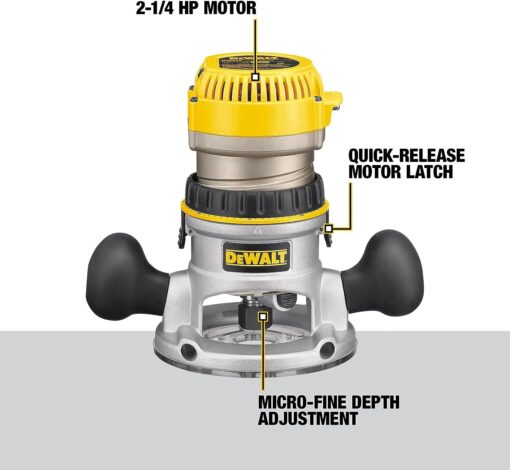
Pros and Cons of Plunge Woodworking Routers
Advantages of Plunge Woodworking Routers
- Adjustable depth settings allow for versatility in cutting depths.
- Precise plunge mechanism ensures accuracy and control during operation.
- Compatible with guide bushings and templates for template routing.
- Convenient router bit changing mechanisms save time and effort.
- Built-in or attachable dust collection systems maintain cleanliness.
- Available in various motor power options for different woodworking needs.
- Spindle lock functionality provides stability during depth adjustment.
- Wide range of prices allows for options that suit different budgets.
- Easy to find and purchase through woodworking stores and online marketplaces.
- Highly recommended for their versatility, precision, and ease of use by professionals in the woodworking industry.
Disadvantages of Plunge Woodworking Routers
- Can require more experience and skill to operate effectively.
- May necessitate a larger workspace due to the plunge mechanism and added features.
- Additional setup and adjustment time may be required for some routing tasks.
- Some models may have a higher price point compared to fixed-base handheld routers.
- Requires proper maintenance and occasional repairs for optimal performance.
Pros and Cons of Fixed-Base Handheld Routers
Advantages of Fixed-Base Handheld Routers
- Stable and controlled routing for tasks such as edge routing and trimming.
- Ease of handling with lightweight and ergonomic design.
- Compact size allows for portability and maneuverability in confined spaces.
- Convenient router bit changing mechanisms for quick and efficient changes.
- Option to attach dust extraction system for improved cleanliness.
- Available in various motor power options for different woodworking needs.
- Spindle lock ensures stability during routing tasks that require consistent depths.
- Affordable price points make them accessible to woodworkers with budget constraints.
- Widely available in woodworking and hardware stores, as well as online marketplaces.
- Recommended for their stability, control, and value for money by professionals and woodworking enthusiasts.
Disadvantages of Fixed-Base Handheld Routers
- Limited in-depth adjustment options compared to plunge routers.
- May require more planning and adjustment time for precise routing depths.
- Template routing may require additional jigs or guide systems for accuracy.
- Some models may have fewer features or versatility compared to plunge routers.
- Dust collection options may require additional setup and configuration.
- Proper maintenance and occasional repairs are needed for optimal performance.
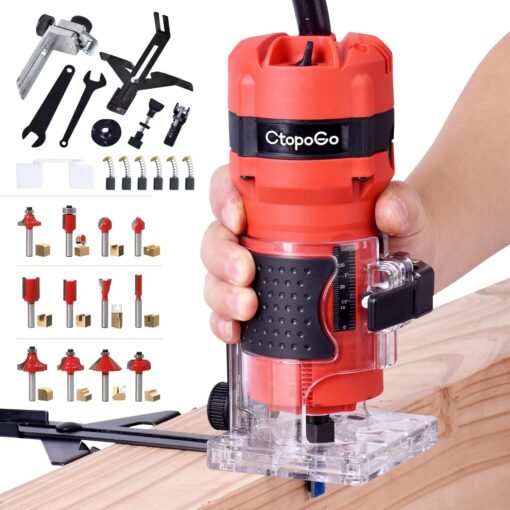
Conclusion
Choosing the Right Router for Your Needs
When it comes to selecting the right woodworking router, the choice between plunge and fixed-base handheld routers ultimately depends on your specific needs, preferences, and woodworking projects. Both types of routers offer unique advantages and are suited for different applications.
If you value versatility, adjustable depth settings, precision, and the ability to work with templates or guide bushings, a plunge woodworking router may be the ideal choice for you. Plunge routers excel in tasks that require varying depths, intricate designs, and template routing.
On the other hand, if you prioritize stability, control, ease of handling, and edge routing applications, a fixed-base handheld router may better suit your needs. Fixed-base handheld routers are known for their stability during operation and are particularly suitable for tasks that require precision and control.
Impact of Personal Preferences
The impact of personal preferences cannot be understated when choosing between plunge and fixed-base handheld routers. Consider your woodworking style, the specific tasks you frequently undertake, and the features that are most important to you. The right router should enhance your woodworking experience and align with your preferences, ensuring that you enjoy using it and achieve the desired results.
Final Verdict
In the debate of plunge woodworking routers versus fixed-base handheld routers, there is no clear winner. Both types of routers have their strengths and limitations, and the decision ultimately depends on your individual needs and preferences. By thoroughly evaluating the features, advantages, and disadvantages of each type of router, you can make an informed decision and choose the router that best suits your woodworking projects. Whether you opt for the versatility of a plunge router or the stability of a fixed-base handheld router, investing in a high-quality router will enhance your woodworking capabilities and open up new possibilities for creative projects.

